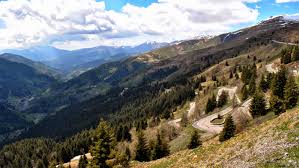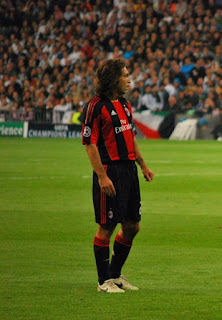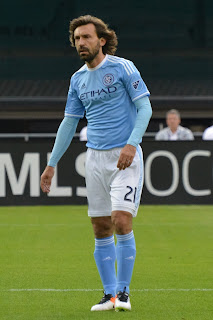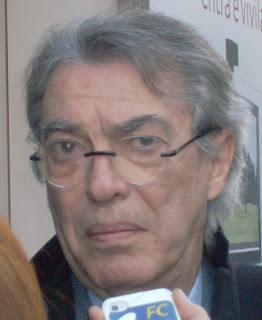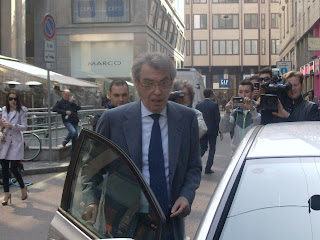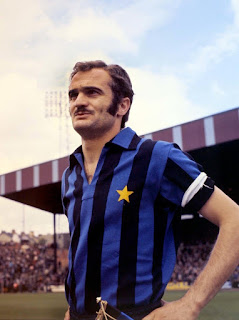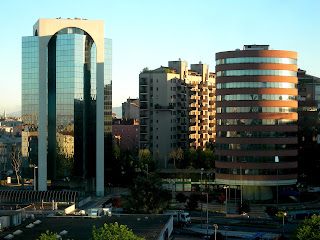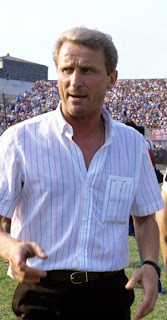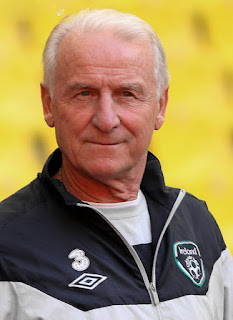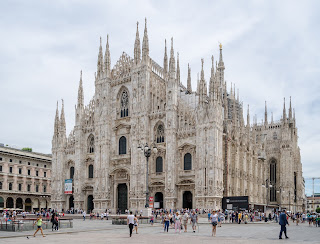First woman to be Mayor of Milan and head of RAI
 |
| Letizia Moratti was a government minister and the first female Mayor of Milan |
Letizia Moratti, one of Europe’s best-known businesswomen
and a successful politician, was born on this day in 1949 in Milan.
Married to the oil magnate Gianmarco Moratti, she was chair
of the state television network RAI between 1994 and 1996, a minister in former
prime minister Silvio Berlusconi’s second and third administrations and Mayor
of Milan between 2006 and 2011.
Born Letizia Maria Brichetto Arnaboldi, her antecedents are
the Brichetto family from Genoa, who founded the first insurance brokerage
company in Italy, and the noble Arnaboldi family from Milan. Her grandmother, Mimona Brichetto Arnaboldi,
was a society hostess in the 1930s and an outspoken opponent of Fascism.
Letizia attended a private school in Milan and had classical
dance classes at the Carla Strauss Academy in the Brera district. She attended the University of Milan and
graduated in political science.
At around the same time, she met Gianmarco Moratti, an oil
contractor whose brother, Massimo, a petrochemicals tycoon, is the former
chairman of Internazionale.
With funding from the Moratti family, Letizia launched her
first business at the age of 25 when she founded GPA, an insurance brokerage
which eventually became a subsidiary of the Moratti Group. In 1990 she joined the board of the Italian
Commercial Bank.
 |
| Moratti with the president Giorgio Napolitano on the occasion she was honoured by the state |
It was during Silvio Berlusconi’s first administration, in
1994, that she became the first woman to be chair of RAI. During her two years
in the role, she supervised radical internal reorganization turned losses into
a significant profit.
Moratti joined Berlusconi’s Forza Italia party and served as
Minister for Education, Universities and Scientific Research from 2001 to 2006,
during which time she introduced reforms in the Italian schools system and in
university teaching.
After leaving national government she stood for mayor of her
home city in 2006 and won with a 52 per cent share of the vote, which opened
the way for her follow her own ideals, particularly in terms of the environment.
The first woman to be elected mayor of the city, she introduced measures to encourage Milanese citizens to
ride bicycles, increasing the number of secure places to leave bicycles and
making available 5,000 bicycles to rent, and to discourage the use of cars by introducing a congestion charge based on emissions.
During her period in office, she also made a successful bid
to have Milan host Expo 2015.
 |
| Moratti has been a fervent campaigner against drug abuse |
Moratti failed to win a second term, losing to a left-wing
candidate who, ironically, was supported by her brother-in-law, Massimo, who
could never quite reconcile his support for his sister-in-law with his
opposition to Berlusconi, owner of Inter’s city rivals, AC Milan.
Away from politics, Moratti has been a fervent anti-drugs
campaigner. Since 1996 she has been a member of the steering committee of Rainbow
- the International Association Against Drugs – and in March 2000 she was
appointed Civic Ambassador of the United Nations against Drugs and Crime.
She is the founder of the San Patrignano Foundation, which
aims to help drug users find a different path.
Since February 2012, Moratti has been developing microcredit
projects aimed at helping disadvantaged people who do not qualify for
traditional bank loans.
In January 2014 she was awarded the honour of Grande
Ufficiale al Merito della Repubblica Italiana.
She has two children, Gabriele and Gilda, and is currently
chair of the management board of UBI Banca.
| A typical narrow street in the trendy Brera district of Milan |
Travel tip:
The Brera district of Milan is so named because in around the
ninth century, for military purposes, it was turned into a ‘brayda’ – a Lombardic
word meaning ‘an area cleared of trees’.
Today, it is one of Milan’s most fashionable neighbourhoods, its narrow
streets lined with trendy bars and restaurants, and has been home to artists
and writers traditionally, giving it a Bohemian feel that has brought
comparisons with Montmartre in Paris.
The Brera is home to the Brera Academy of Fine Arts and the Brera Art
Gallery.
| Bicycles to rent are a feature of Milan today |
Travel tip:
Visitors to Milan by car should note that access to the
centre of the city is subject, like London and other major cities, to a
congestion charge, introduced during Letizia Moratti’s time as mayor. The area covers about 8.2 square kilometres and
is controlled by entry gates with cameras. Charges vary for residents and non-residents
and the vehicle’s pollution rating. Whereas hybrid and electric cars have
benefitted from exemptions, some diesel vehicles are banned. There are a number of out-of-town car parks
with transport access to the centre, where many visitors take advantage of the
bicycle rental scheme, also introduced by Letizia Moratti.




